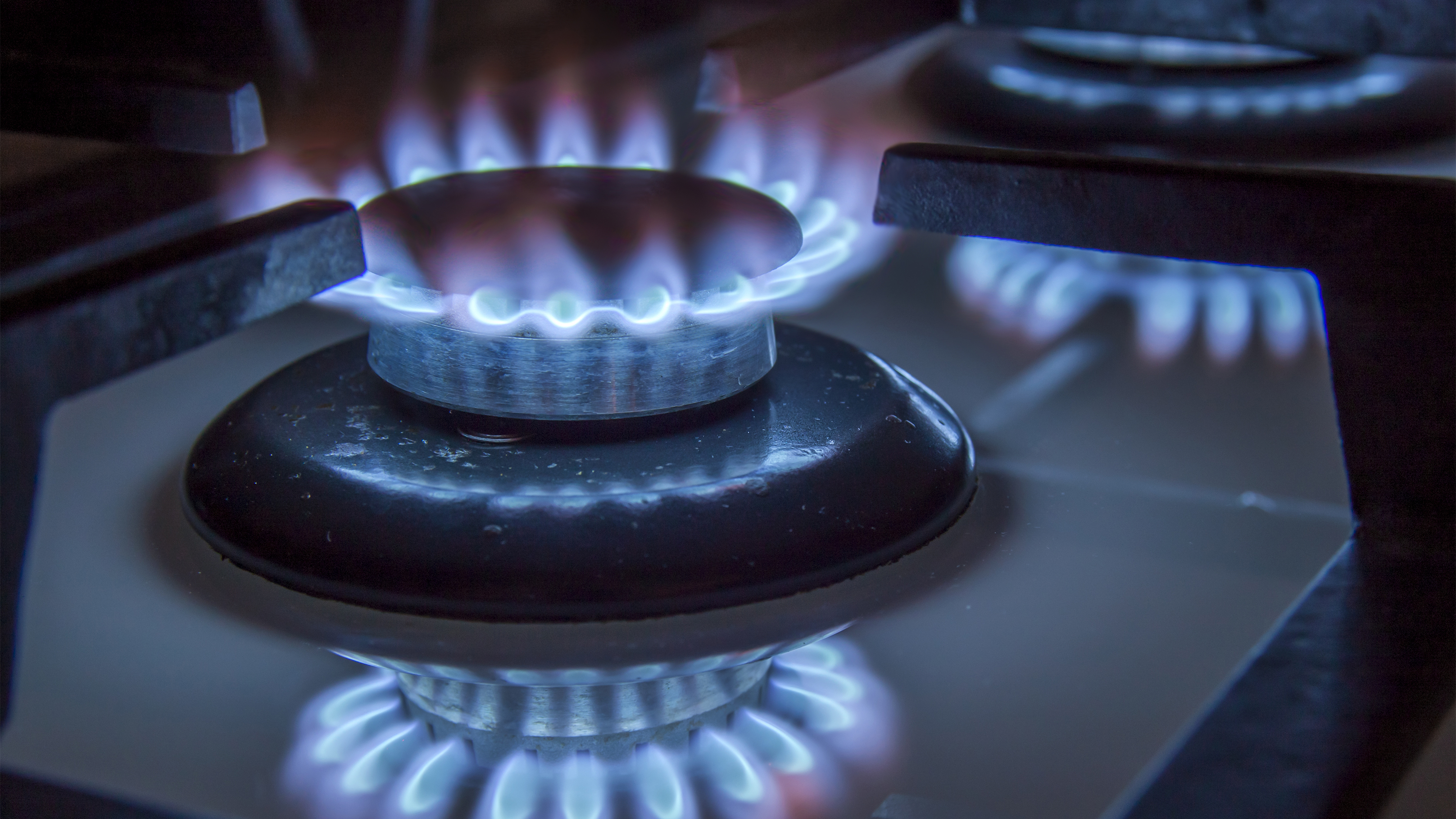
Prototype green hydrogen production stack at the research house © Chelmor Property
The production of green hydrogen to power homes and commercial buildings is essential if we are to reach the UK government's ambitious zero-carbon target by 2050, as well as interim targets by 2030.
Using data collected from the Creo research house in Kent, Chelmor Property and sustainable developer Creo are developing a green hydrogen test property in Llanelli, South Wales – Western House – which, after an initial period connected to the grid, will be powered exclusively by solar and green hydrogen.
On completion, Western House will be used as a demonstration property to enable governments, local authorities, housing associations and professional designers to view and discuss its technology.
Creo is currently working on two building standards: Creo+ and Creo Zero. Creo+ uses the proprietary Creoblocks, solar power, air-source heat pumps, battery storage, underfloor heating and a heat recovery system, whilst Creo Zero includes all of the above together with a green hydrogen system which will be zero carbon and can be entirely off grid.
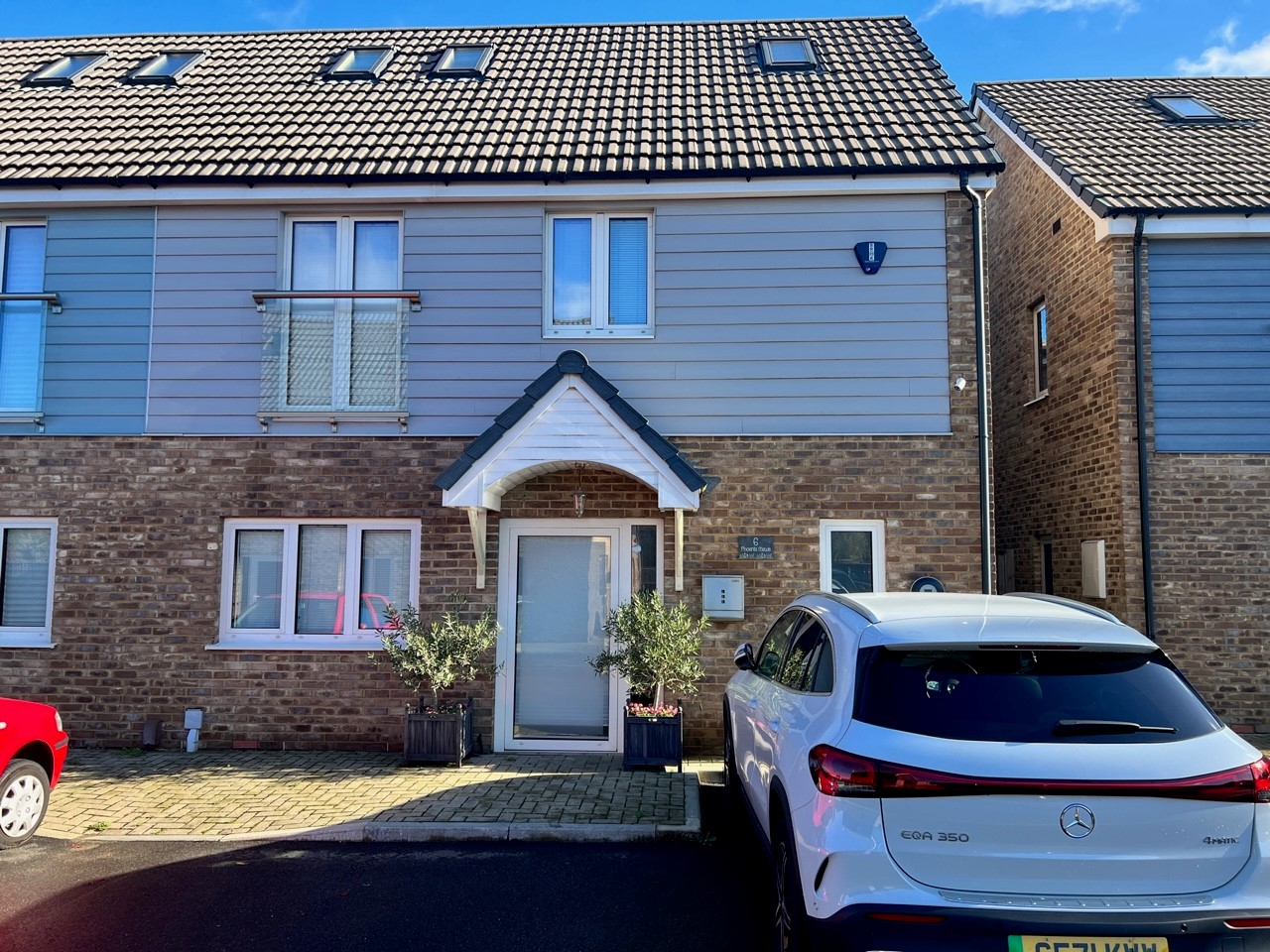
Research house powered by solar-derived green hydrogen © Chelmor Property
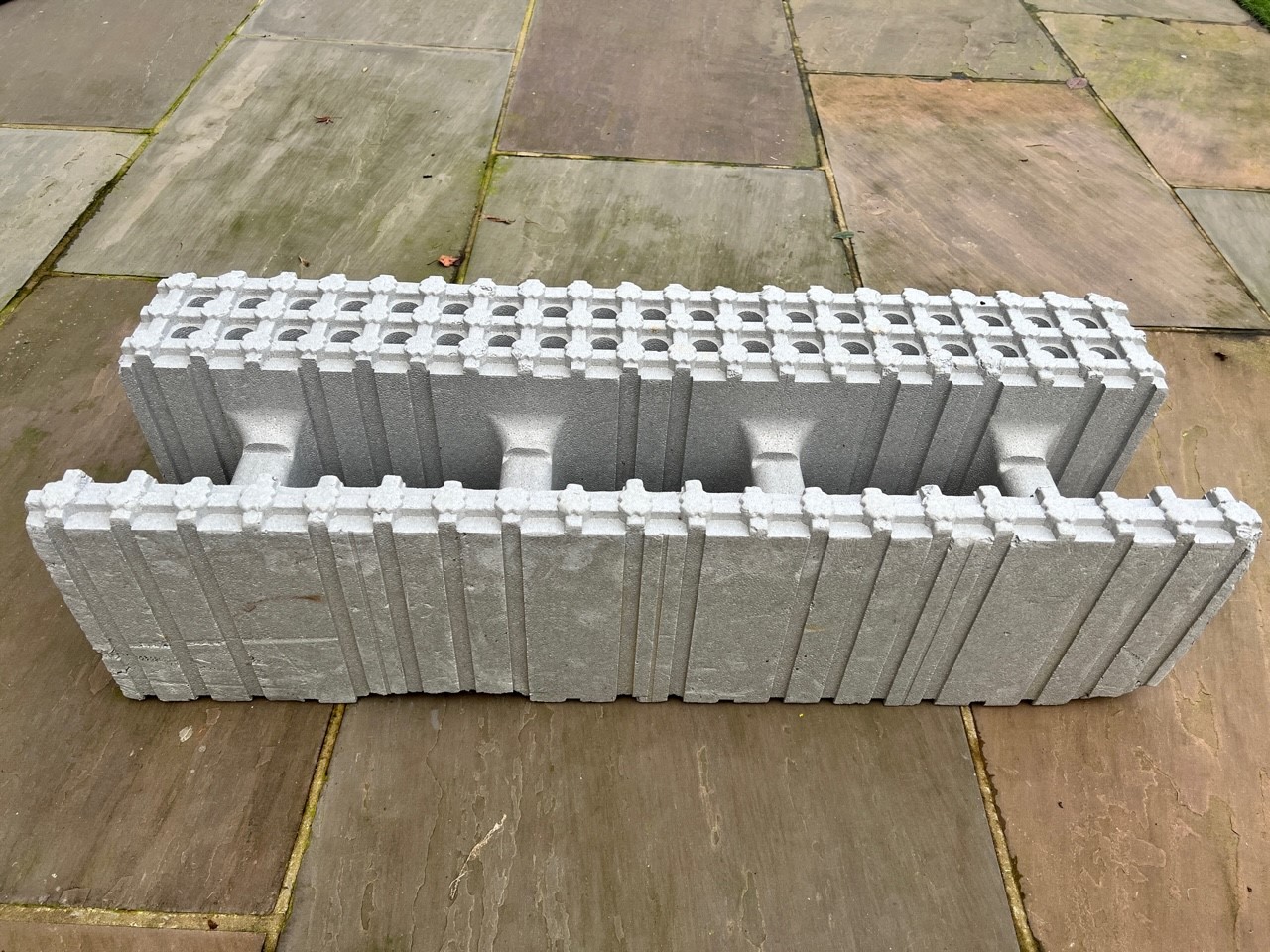
Creoblock ICF wall system © Chelmor Property
Combination approach eliminates energy bills
The original research house in Kent was constructed using Creoblocks, solar panels and batteries, underfloor heating, an air-source heat pump and a heat recovery system. These Creoblocks – insulated concrete formwork (ICF) developed by Creo International – can be directly rendered with a polymer render and plastered on the inside, minimising the construction work required. This reduces the U-value to 0.14W/m2K.
Although the research house initially saved around 80% of the energy used by a traditional build, it was not possible to reach 100% energy savings without many more solar panels and batteries, which would have been impractical for most residential settings.
The 20% energy shortfall was therefore met using electricity generated on site using green hydrogen, a fuel created using renewable energy such as solar, wind or wave instead of electricity from the grid.
A prototype system was built to produce green hydrogen from electrolysis using the same solar power system, and installed in the research house with great success, enabling the property to be totally off grid and which produced more energy than the house required, with surplus energy being sold back to the grid.
Over the past two years, this system has been tested, modified and improved to optimise performance, resulting in a zero-carbon house with no energy bills.
The roof-mounted solar panels feed a lithium battery, and the heat pump provides underfloor heating at all levels as well as hot water. Further energy savings were made by the heat recovery system installed in the property.
Hydrogen facility kept separate for safety
Western House will be as well insulated as the research house, and any internal moisture will be removed by the heat recovery system, which will also reduce heating costs. The garden will contain a bespoke outbuilding for the hydrogen production equipment and, adjacent to this, a hydrogen storage tank protected and ventilated to the atmosphere.
Creo is manufacturing its own hydrogen storage tanks using premium steel and pressurised to 40 bar. During installation, the tanks will be located outside within a lockable protective cage with a solid roof and a meshed or grill front and sides. This cage will prevent any vandalism or tampering and, in the unlikely event of a leak, will allow hydrogen to escape safely to the atmosphere.
During summer months, sunlight will provide electricity for the house, and the excess will be used to create green hydrogen, which will then be stored in the molecular hydrogen storage tank.
During winter months, the fuel cell converts this hydrogen to electricity, which is then fed back into the battery or directly into the house to cover the 20% energy deficit, enabling the house to be off grid.
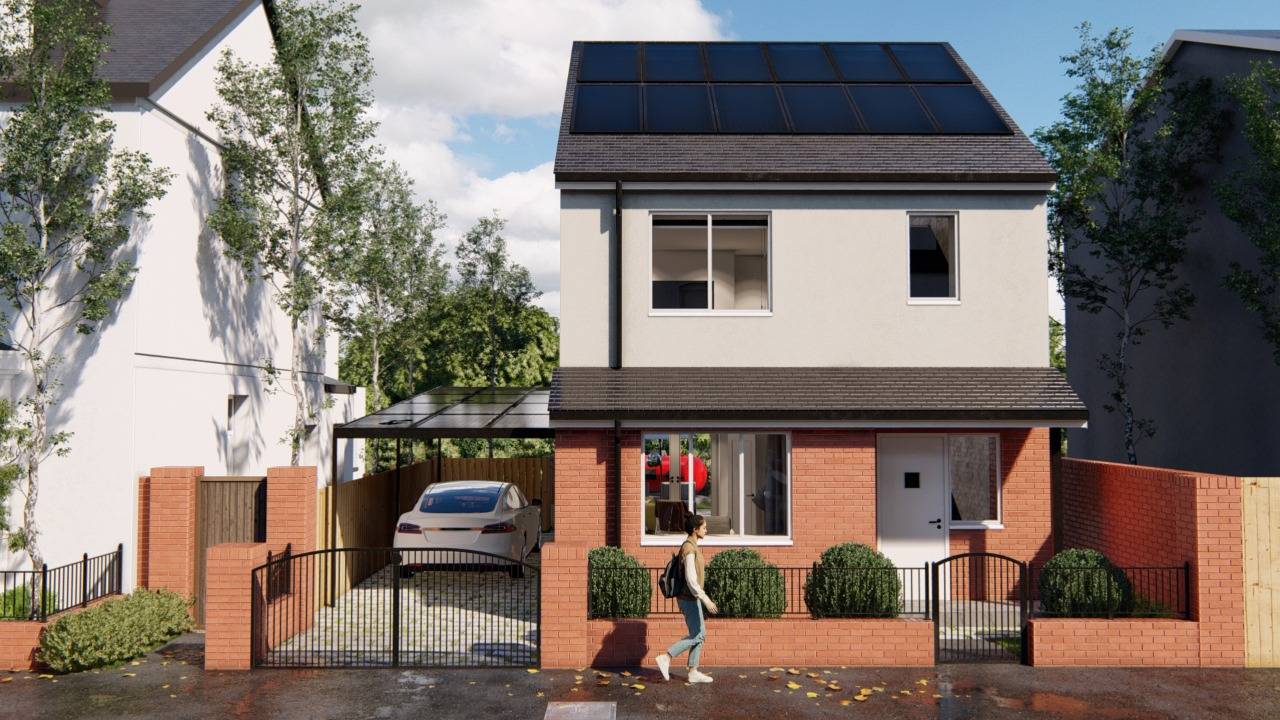
Western House © Chelmor Property
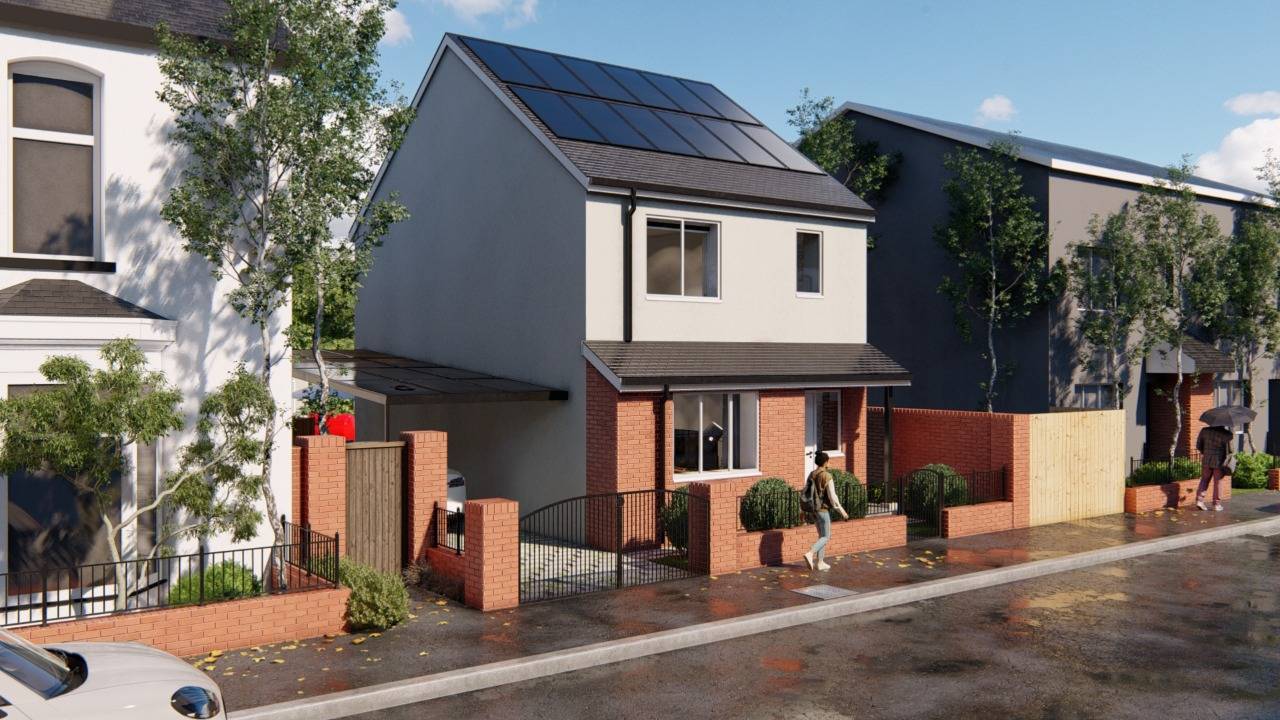
Western House © Chelmor Property
The solar electricity, battery storage and hydrogen production, storage and conversion into electricity are controlled by an energy management system (EMS) that monitors the equipment around the clock and reports any issues directly to the homeowner's email or mobile phone.
Work is under way to design and test an artificial intelligence system that will be integrated into the EMS and monitor potential maintenance issues before they arise. The system will also analyse weather forecasts for cold periods where additional hydrogen needs converting to electricity and instruct systems in advance, improving their overall efficiency.
For safety reasons, the energy system has been specifically designed to keep hydrogen itself, as well as its production and storage, outside the home. All these functions take place in the purpose-built outbuilding, which supplies electricity to the house on demand.
This outbuilding will be fully ventilated, with hydrogen alarms that immediately sound and make contact with a mobile in the event of any leaks. Hydrogen production would also cease immediately. However, no such leaks have been detected or alarms raised at the research house in more than two years since installation.
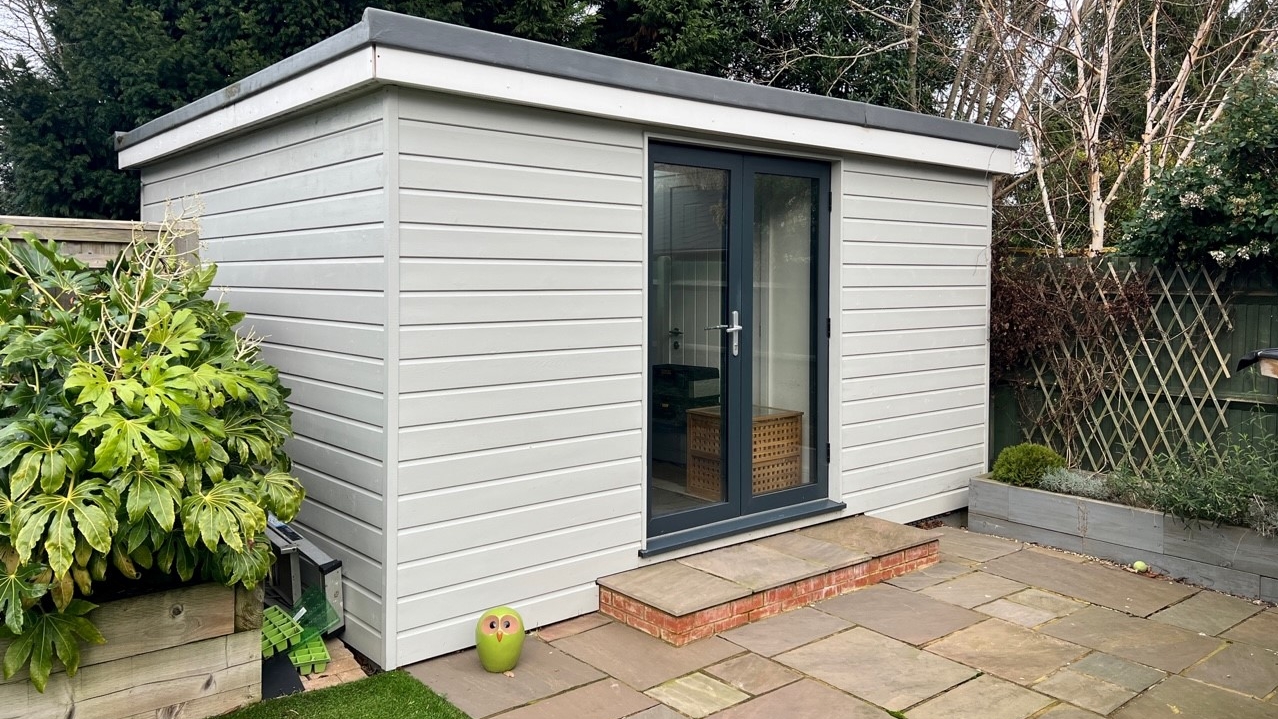
Bespoke outbuilding for producing green hydrogen on site © Chelmor Property
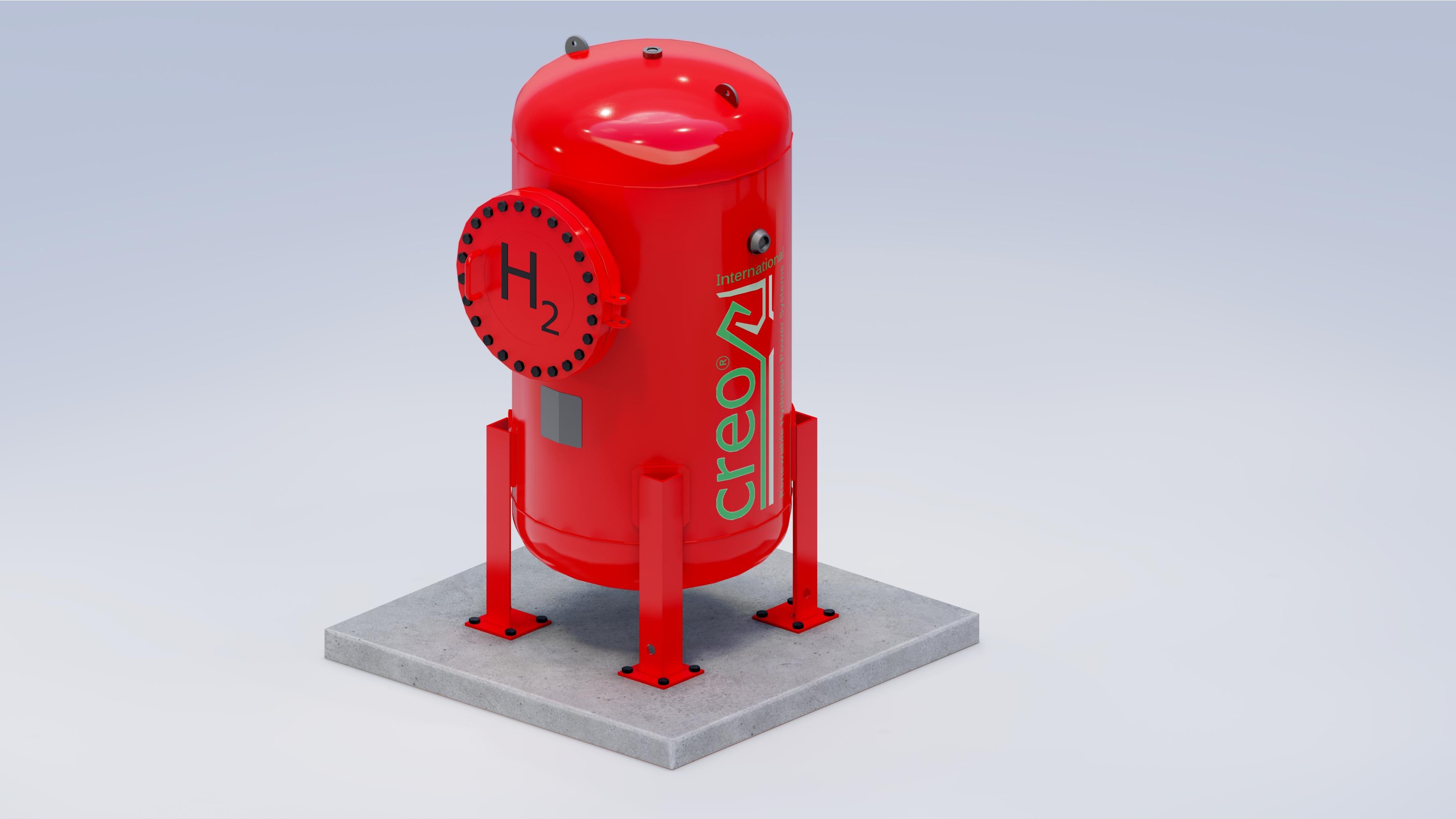
A typical Creo hydrogen storage tank © Chelmor Property
System cuts significant carbon
According to Ofgem, a three-bedroom house constructed by traditional methods in the UK uses an average of 12,000kWh of gas and 2,900kWh of electricity per year, giving a total annual domestic energy use of 14,900kWh.
For each kilowatt–hour of energy that would normally be taken from the grid, a house built to Creo building standards saves 233g of carbon dioxide. A three-bedroom house in the UK using the system would therefore save around 3,472kg of carbon dioxide annually.
Although it is too early to assess the system's durability, the research house has been operating for two years without any issues. The electrolyser manufacturer states that its product should last for 35,000 hours, and at the research house the average daily use is around four hours, potentially giving a lifespan of around 24 years.
However, there are not many qualified hydrogen engineers in the UK at present, so Creo has discussed setting up training courses with a prominent university, but many engineers on the Gas Safe Register could be trained to install and maintain systems.
Creo system maintenance will be similar to that of a gas boiler, with an annual service. The research house, which is kept at a constant 22℃, also suggests that occupant well-being has improved, with the ability to reset the house temperature whenever required. The occupants can easily set the desired temperature they require all year round.
Scope for saving and scaling
Data from the research house will allow us to assess costs more accurately. In time, the green hydrogen system should compare favourably with the price of installing a new central heating system (between £4,000 and £5,000) and standard annual energy bills.
Using Ofgem annual usage figures and current gas and electric prices, the average annual saving for a three-bedroom house in the UK would be between £2,222 and £3,213. According to British Gas, the average annual energy cost for a three-bedroom house is £2,499.
The international hydrogen industry has already started scaling up and manufacturing electrolysers and fuel cells in volume. On 9 August 2022, Enapter announced to its worldwide integration partners that the cost of its electrolysers will have fallen by 83% in 2025 due to mass production at its new factory in Germany and through robotics.
As the Creo system is based on a modular design, it can be used in any size of property and, eventually, will be suitable for commercial properties. The next stage will be a green hydrogen mini-grid system for groups of houses.
Instead of individual hydrogen systems (as per Western House), houses in new estates will be served by a central hydrogen production facility. This will remove the need for individual outbuildings in gardens and reduce the overall cost of green hydrogen production. While each house will still have solar panels, hydrogen production will be centralised, and overall costs will be reduced due to bulk buying of all materials.
The research house has, to a certain extent, achieved its initial goal of developing a prototype zero-carbon house powered by solar and green hydrogen with no energy bills.
However, in developing Western House, Chelmor and Creo will be able to optimise system performance at minimum cost using the data collected and adapt it for the test house and future specific properties.
'As the Creo system is based on a modular design, it can be used in any size of property and, eventually, will be suitable for commercial properties'
Neil Jenkins MRICS is managing director at Chelmor Property and director at Creo Group
Contact Neil: Email | Twitter | LinkedIn
Related competencies include: Energy and renewable resources, Housing maintenance, repairs and improvements, Housing management and policy, Sustainability
RICS champions sustainability across professions
With the built environment estimated to be responsible for around 40% of global carbon emissions, RICS is championing sustainable practices across the built and natural environment. We are also empowering professionals to embed sustainability considerations into the way they work and better measure environmental impacts.


